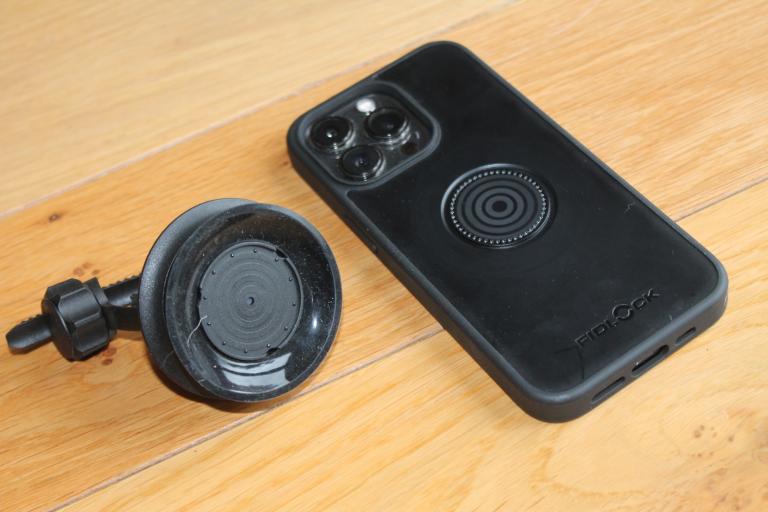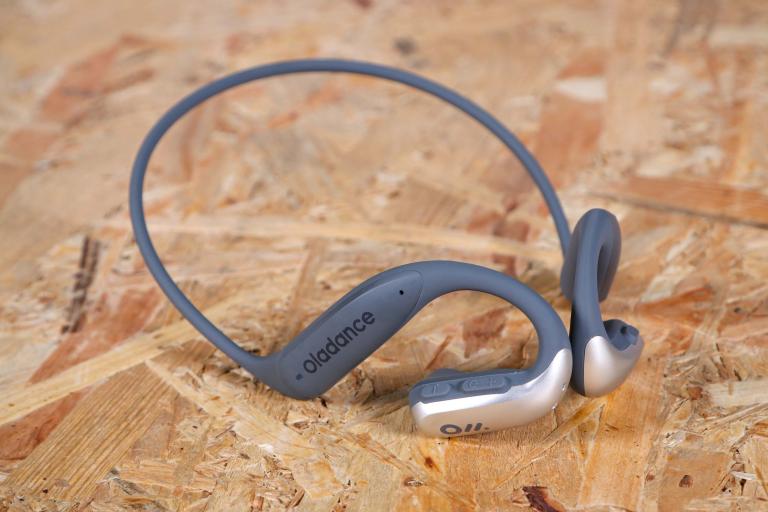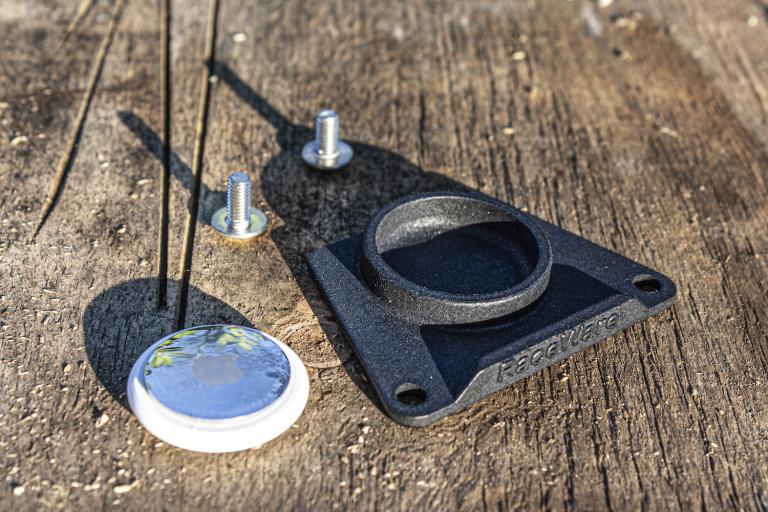- News
- Reviews
- Bikes
- Accessories
- Accessories - misc
- Computer mounts
- Bags
- Bar ends
- Bike bags & cases
- Bottle cages
- Bottles
- Cameras
- Car racks
- Child seats
- Computers
- Glasses
- GPS units
- Helmets
- Lights - front
- Lights - rear
- Lights - sets
- Locks
- Mirrors
- Mudguards
- Racks
- Pumps & CO2 inflators
- Puncture kits
- Reflectives
- Smart watches
- Stands and racks
- Trailers
- Clothing
- Components
- Bar tape & grips
- Bottom brackets
- Brake & gear cables
- Brake & STI levers
- Brake pads & spares
- Brakes
- Cassettes & freewheels
- Chains
- Chainsets & chainrings
- Derailleurs - front
- Derailleurs - rear
- Forks
- Gear levers & shifters
- Groupsets
- Handlebars & extensions
- Headsets
- Hubs
- Inner tubes
- Pedals
- Quick releases & skewers
- Saddles
- Seatposts
- Stems
- Wheels
- Tyres
- Health, fitness and nutrition
- Tools and workshop
- Miscellaneous
- Buyers Guides
- Features
- Forum
- Recommends
- Podcast
review
 Joes Yellow Gel Innertube Sealant
Joes Yellow Gel Innertube Sealant£7.99
VERDICT:
Very good puncture preventative for the cost of a couple of tubes
Weight:
240g
Contact:
At road.cc every product is thoroughly tested for as long as it takes to get a proper insight into how well it works. Our reviewers are experienced cyclists that we trust to be objective. While we strive to ensure that opinions expressed are backed up by facts, reviews are by their nature an informed opinion, not a definitive verdict. We don't intentionally try to break anything (except locks) but we do try to look for weak points in any design. The overall score is not just an average of the other scores: it reflects both a product's function and value – with value determined by how a product compares with items of similar spec, quality, and price.
What the road.cc scores meanGood scores are more common than bad, because fortunately good products are more common than bad.
- Exceptional
- Excellent
- Very Good
- Good
- Quite good
- Average
- Not so good
- Poor
- Bad
- Appalling
Joe's Yellow Gel Innertube Sealant is effective protection against punctures both in inner tubes and tubular tyres.
No cyclists like punctures, and anything that can help to avoid them has to be good, right? Joe's No-Flats are a company specialising in sealants with a range available to suit most applications. This Yellow Gel sealant is designed to be squirted inside the inner tube where it is claimed to be able to deal with any hole in the tread up to about 3mm in size.
First things first, installing the sealant. That's straightforward but you do need to have an inner tube with a removable core, so you might need to purchase a couple of new inner tubes first. Providing your tubes do have removable cores, you simply remove the core, attach the supplied hose over the open valve, attach the bottle on the other end, and squeeze away.
The 240ml bottle I tested is good for two wheels, with 120ml recommend per inner tube. I decided to be more thrifty and went with about 60ml in each inner tube. Valve core back in, inflate the tyre and give it a few rotations to spread the sealant inside the inner tube, and you're ready to ride.
As luck would have it when testing a product designed to protect against punctures, I got a puncture on the first ride out, thanks to the hedge trimmers. A small thorn had penetrated the front tyre and there was the telltale sign of yellow sealant bubbling out around the embedded thorn. I pulled over to the side of the road, extracted the thorn, leaving a hole about 1mm in size. The sealant bubbled out a bit more. I gave the wheel a few spins, and sure enough the bubbling stopped.
It was clear I had lost a tiny bit of pressure, but I carried on with the ride and another two hours later I returned home. I attached a pressure gauge, turns out I only lost about 8psi. If the inner tubes hadn't been filled with sealant I would no doubt have had to stop and change the inner tube, interrupting the rhythm of my ride, and most likely resulting in dirty hands.
As well as using it in inner tubes, I've also found the sealant ideal for fixing a recent puncture in a tubular tyre that had been freshly glued to the rim a few days before. Since adding the sealant, the tub is still holding pressure, so for anyone regularly riding with tubulars, this sealant is ideal. You can use it to fix a puncture, as I did in this case, but it might be more prudent to use it as a preventative measure, and squirt some in from the outset.
Joe's claim it lasts 12 months, I haven't been using it long enough to verify that claim. As well as the 240ml bottle, it's available in a 5 litre tub if you have a fleet of bikes you want to puncture-proof.
Verdict
Very good puncture preventative for the cost of a couple of tubes
road.cc test report
Make and model: Joes Yellow Gel Innertube Sealant
Size tested: n/a
Tell us what the product is for, and who it's aimed at. What do the manufacturers say about it? How does that compare to your own feelings about it?
Fiber gel sealant for inner-tubes (not for tubeless system). Contains micro-fibers to prevent punctures in the tread up to 3 mm.
Non-toxic, Long lasting and easy to install. Easy to use spout fits into all valves.
For effective puncture resistance, add fresh sealant every 12 months.
If you get a puncture, always SPIN the wheel to distribute the sealant.
Recommended Amount for 1 26" or 29" inner-tube: 120 ml. 240 ml bottle is good for 2 bicycle wheels and 5 liter jerrycan is good for approximately 42 wheels.
Tell us some more about the technical aspects of the product?
Micro-fibre gel flows around tube to seal punctures as they happen
Fibres can seal punctures up to 3mm in length
Non-toxic, long lasting and easy to install with easy to use spout.
Includes core remover key for use with schrader / car type valves
Can also be used on presta valve tubes fitted with removable cores (InnerTubeShop.com superlight tubes and Schwalbe branded tubes only)
240ml bottle will effectively treat two MTB tubes or 3-4 road tubes
Rate the product for quality of construction:
8/10
Rate the product for performance:
9/10
Rate the product for durability:
7/10
Too soon to tell if it really lasts 12 months like the company suggests.
Rate the product for weight, if applicable:
7/10
Adds a tiny bit of weight to each tyre, not that you'll really notice.
Rate the product for value:
8/10
Tell us how the product performed overall when used for its designed purpose
Does what it says on the tin. This is a really useful product for daily commuters, tourers and Audax riders, but racers and performance minded road cyclists can also benefit.
Tell us what you particularly liked about the product
Easy to install.
Tell us what you particularly disliked about the product
Adds a tiny bit of weight to the bike.
Did you enjoy using the product? Yes.
Would you consider buying the product? Yes.
Would you recommend the product to a friend? Yes.
About the tester
Age: 31 Height: 180 Weight: 67
I usually ride: My best bike is:
I've been riding for: 10-20 years I ride: Every day I would class myself as: Expert
I regularly do the following types of riding: road racing, time trialling, cyclo cross, commuting, touring, mtb,
David worked on the road.cc tech team from 2012-2020. Previously he was editor of Bikemagic.com and before that staff writer at RCUK. He's a seasoned cyclist of all disciplines, from road to mountain biking, touring to cyclo-cross, he only wishes he had time to ride them all. He's mildly competitive, though he'll never admit it, and is a frequent road racer but is too lazy to do really well. He currently resides in the Cotswolds, and you can now find him over on his own YouTube channel David Arthur - Just Ride Bikes.
Latest Comments
- ajuk.uk@gmail.com 0 sec ago
I understand the intuition that a lower speed limit is safer. However, when a council measures a non-compliance rate of 99.4% as they did in Rogiet...
- imajez 4 min 16 sec ago
The difference here is that traffic lights are needed for cars to stop drivers causing dangerous accidents. Cyclists don't really need them. In the...
- mattw 10 min ago
I don't see a need for any major analysis....
- shiggy 13 min 51 sec ago
Kent Outdoors is NOT a Canadian company. It was based in Ohio USA until moving to Utah....
- mattw 25 min 38 sec ago
Meanwhile, elsewhere on the site: https://road.cc/content/news/hit-and-run-driver-without-licence-jailed-y...
- RoubaixCube 1 hour 2 min ago
Don't know how long you've been dish soap to wash your drive chain but dish soap and aluminium dont mix. It causes galvanic corrosion
- mattyb95 1 hour 1 min ago
Just collected it this week and that's exactly the end result, it's had the insides of the slit smoothed off and in the meanwhile I bought a Hope...
- Rendel Harris 1 hour 34 min ago
Well it pretty much does, a 70kg rider on an 11.6kg bike will need to put out 384W to climb a 10% gradient at 15km/h, to do it at the same speed on...
- Steve K 1 hour 53 min ago
Prompted by this thread, I've just bought a pair of the Swrve's. A couple of comments - ...
- Chris RideFar 2 hours 22 min ago
Conclusion: If you want to simplify tyre maintenance tasks, stick to hooked rims and inner tubes. I'm a pro' bike mechanic, and I wouldn't choose...




Add new comment
14 comments
I use Caffe latex in my tubs, it goes through a regular valve, and a lower dose (weight) I carry the little (tipp ex sized) bottle of ZOT hardener which fixes bigger holes.
Well, that's the next Wiggle ride in the New Forest taken care of!
Thanks for the reply, so, 4 tubes out of 1 tube seems like a good investment, i will give it a try. Off to see if my tubes have removable cores...
Sealant is great for road tubes, i'd been considering going road tubeless last winter following a string of visits from the puncture fairies, which left me with stranded on a couple of spins due to a broken mini pump and running out of replacement tubes. I'd tried slime tubes previously (they are useless) but had read about continental revoseal (http://www.conti-online.com/www/bicycle_de_en/themes/accessories/revosea...). This stuff is great, 60ml into each tube. It works, I've seen the evidence of it working with white spray over the bottom bracket / chainstay and the hissing are stops. Just one word warning, you may need to remove the valve to free it up a bit every so often as they can become "sticky" get a need nose pliers for removing the valve core.
Slime?
Slime?
Can you tell me your reasoning for not following the manufacturers recommendations re the amount to put in each tube please? The manufacturers invest a lot of time and money in optimising their product so it seems strange that you disregard their advice and "and went with about 60ml in each inner tube". Luckily, your puncture did seal but if it hadnt, would the rating still be 8/10? Can I assume that 60ml is enough to use in each tube because if so, this becomes a very attractive proposition.
Because, based on lots of previous experience with tubeless, I felt that would be enough and my assumption has proved right throughout testing. Applying less sealant also saves a bit of weight too. The main downside to less sealant in the tube/tyre is it'll simply run out longer if I get a succession of punctures
I'm interested in this - I have a couple of questions : One of the benefits of tubulars is the low weight at the periphery and 120 ml of gunk (two fills after 12 months) might potentially weigh 100g? Seems to be a bit of (or the) drawback. Do you know how much it the 240ml bottle weighs?
Second question - in the blurb it says 'InnerTubeShop.com superlight tubes and Schwalbe branded tubes only' - whats that about? Obviously doesnt apply to tubulars, and I wonder what the significance of these two tube types is?
Thanks
From memory, others maybe able to say for certain.
Schwalbe tubes have removable cores, to get the sealant into the inner tube you have to be able to remove the core. Most inner tubes don't have removable cores.
Ok, that makes sense. All my tubs have removable cores, so that is not an issue.
@edster99 continental, schwable and possibly vittoria produce road tubes with removal cores not sure about mtn bike tubes but would imagine its the same. Get yourself a needle nose pliers to remove the core, much easier than a standard pliers or a grips.
From memory, others maybe able to say for certain.
Schwalbe tubes have removable cores, to get the sealant into the inner tube you have to be able to remove the core. Most inner tubes don't have removable cores.
Depends how worried you are about a tiny bit of weight. The weight savings of tubs are pointless when you puncture and you can't simply stick any inner tube in. The small weight penalty of the sealant is one worth living with if it potentially minimises flats out on the road without a support car